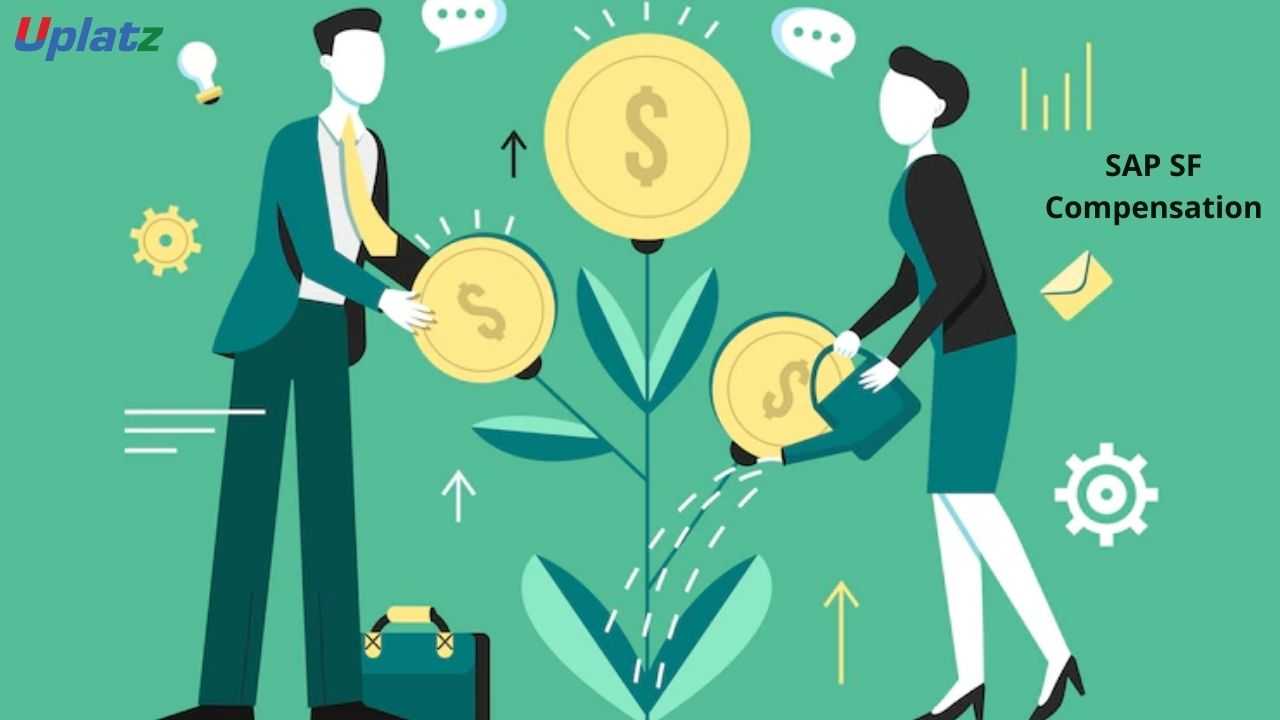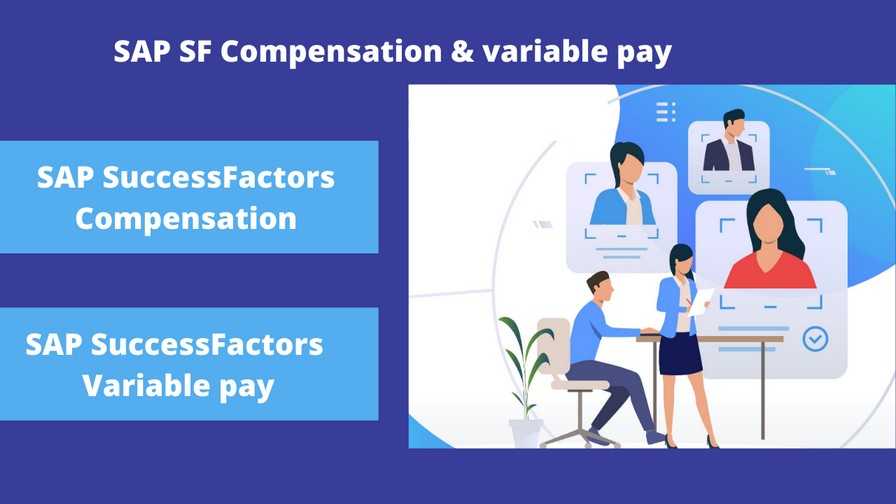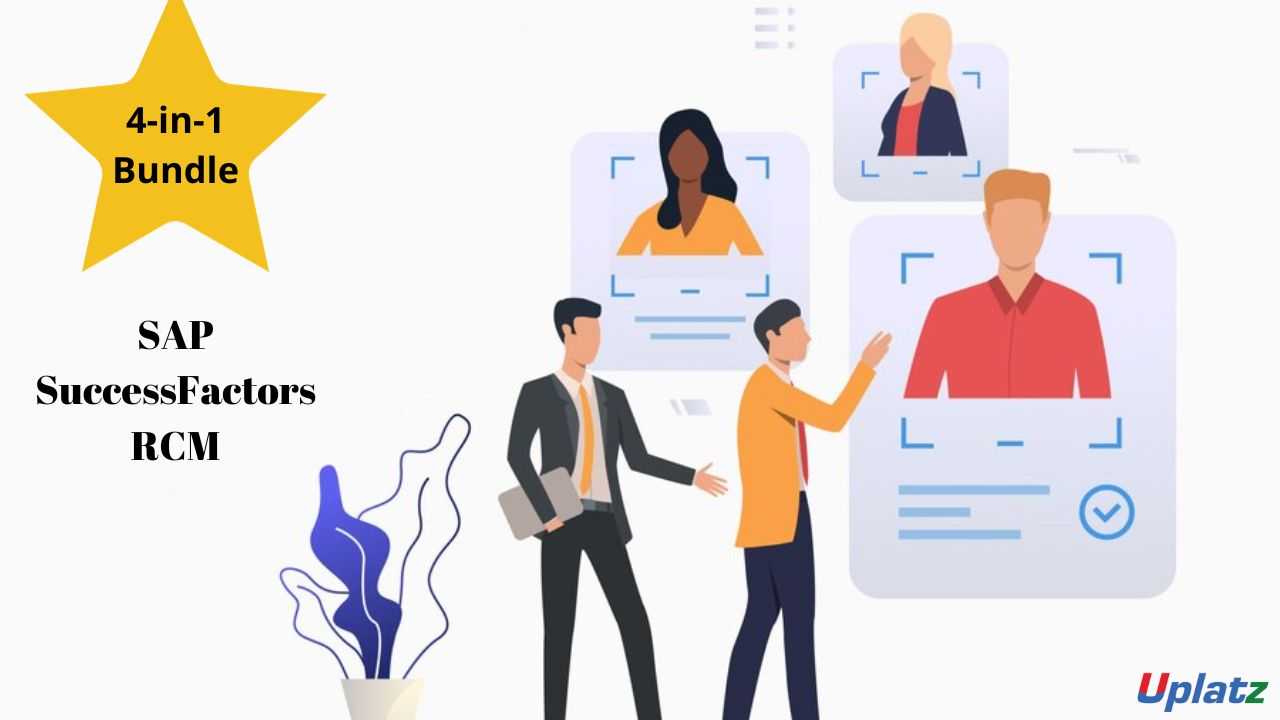SAP SuccessFactors Compensation (basic to advanced)
Learn how to identify customer’s needs, update compensation plan templates and data with XML & Admin center, configure salary sheet and stock sheets. View Course Curriculum
Price Match Guarantee
Full Lifetime Access
Access on any Device
Technical Support
Secure Checkout
Course Completion Certificate
View Course Curriculum
Price Match Guarantee
Full Lifetime Access
Access on any Device
Technical Support
Secure Checkout
Course Completion Certificate
 87% Started a new career
BUY THIS COURSE (
87% Started a new career
BUY THIS COURSE (GBP 12 GBP 29 )-
 82% Got a pay increase and promotion
82% Got a pay increase and promotion
Students also bought -
-

- SAP SuccessFactors Compensation
- 10 Hours
- GBP 12
- 71 Learners
-

- Bundle Course - SAP SuccessFactors Compensation and Variable Pay
- 20 Hours
- GBP 22
- 114 Learners
-

- Bundle Multi (4-in-1) - SAP SuccessFactors RCM
- 75 Hours
- GBP 22
- 562 Learners

SAP SuccessFactors Compensation module provides a single source of all employee data for calculation of compensation components data from Employee Central or SAP ERP HCM, if integrated, providing a single source of truth for the compensation process. This complex and robust bonus calculation engine allows an organization to tie business goals and individual results to the payout amount. Employee Central is the input into the compensation planning process and any compensation recommendations and changes are interfaced to EC into the salary data section of the employee portal as shown above.
SAP SuccessFactors Compensation helps business leaders, compensation managers, and HR professionals dramatically improve budget accuracy, reduce risk, and tie their greatest expense - employee pay - to actual business results. It is the most comprehensive compensation management suite in the market. SuccessFactors is a SAP product suite to provide cloud-based solutions to manage various HR functions such as business alignment, people performance, recruitment, and learning activities for all sizes of organizations in more than 60 industries.
SAP SuccessFactors Compensation can help you build and manage strategic compensation programmes that align with the needs of your employees, your business, and your budget. Improve individual and business performance with personalized, timely rewards and recognition programmes. SAP SuccessFactors Compensation helps business leaders, compensation managers, and HR professionals dramatically improve budget accuracy, reduce risk, and tie their greatest expense - employee pay - to actual business results.
Compensation is the largest cost in doing business. Thus, SuccessFactors Compensation provides a simple secure approach to compensation management to produce more accurate budget, reduce risk of data loss and data transfer, and better attract and retain top talents. Employee compensation is one of your largest investments, and making sure these dollars have an impact on the bottom line is essential. When integrated with the broader talent management strategy, compensation can engage employees, ignite better performance, improve execution, and ensure retention of top talent.
SAP SuccessFactors Compensation helps business leaders, compensation managers, and HR professionals dramatically improve budget accuracy, reduce risk, and tie their greatest expense - employee pay - to actual business results. It is the most comprehensive compensation management suite in the market.
Key Features of SAP SuccessFactors Compensation module are:
a) Intuitive and configurable workflow
b) Produce total rewards statements
c) Use bench-marking tools to aid compensation decisions
d) Flexible budget modelling and cascading
e) Performance merit planning
f) Objective, fact based decisions for performance based compensation
g) Built in guidance and smart business rules
h) Part of Human Experience Management (HXM) suite
Uplatz provides this comprehensive SAP SuccessFactors Compensation course with a goal to familiarize you with the core concepts of SF Compensation module along with understanding of how to use it's various features to design & manage your organization's employee salary, compensation, and benefit programmes.
Course/Topic - SAP SuccessFactors Compensation (basic to adv) - all lectures
-
Lecture 1 - Introduction to SAP SuccessFactors Compensation
-
Lecture 2 - Provisioning and HCM Cloud Operations
-
Lecture 3 - Role based Permissions
-
Lecture 4 - Provisioning System for Compensation Management
-
Lecture 5 - Add New Compensation Plan
-
Lecture 6 - Salary Planning
-
Lecture 7 - Compensation Route Map
-
Lecture 8 - Eligibility Rules and Statements
-
Lecture 9 - Total Compensation Plan
-
Lecture 10 - Compensation Plan Configuration - part 1
-
Lecture 11 - Compensation Plan Configuration - part 2
-
Lecture 12 - Design Worksheet
-
Lecture 13 - Compensation Configurations - part 1
-
Lecture 14 - Compensation Configurations - part 2
• You will gain basic skills in how to use SAP SuccessFactors Compensation as an administrator, and will learn how to manage the basic tools for managing the compensation cycle in your organization.
• Manage learner profiles: the information about users that you pulled into Learning for the purpose of managing their learning.
• Manage online content: the online course structure, sources, and content itself. You can define a structure for your content, including exams, you can configure third-party vendors of courses, and you can import your own content to a server you have defined.
• Manage learning needs: the process of defining your organizational learning needs and building a system to offer and track what your people are learning.
• Manage the LMS itself: the process to keep your LMS aligned with your organization as it grows, creates new organizational structures, changes policies that affect global settings, adds countries, defines new roles, and so on.
• Identify appropriate terminology to communicate configuration requirements
• Identify key components of a customer needs assessment during project kickoff
• Create, download, archive, and update compensation plan templates and data with XML and Admin Center
• Configure salary sheet and stock sheet components within a compensation template
• Access help resources
• Identify key integration points between SAP SuccessFactors Compensation and Employee Central modules
• Configure Total Compensation plan by combining Compensation and Variable Pay configurations in one template
• Describe the Spot Awards feature and the basic processes, permissions and configuration of Spot Awards
· Introduction to SuccessFactors Compensation Module
· Key Roles in SAP SuccessFactors Compensation
· Role Based Permissions for compensation
· Configuring the provisioning tool for SuccessFactors Compensation
· Compensation template addition
· Route Map creation
· setting for compensation module
· Field based permissions
· Structure of compensation module
· Settings to be managed from compensation templates
· Action for all plans
· working with compensation forms
· Eligibility settings
· Budget Configuration
· You calc, Matrix, Budget window creation
· guidelines
· PMGM Integration
· EC Integration
· Pushback code
· Custom formulas
· Generating statements
· Guideline modelling
· Rewards and Recognition
· CTC Break Up
· Standard and Custom Reports in Compensation module
· Adhoc reports generation in Compensation module
The SAP SuccessFactors CompensationCertification ensures you know planning, production and measurement techniques needed to stand out from the competition.
Compensation, variable pay, and bonus are a part of the Compensation management package in SuccessFactors and are available under the same license. Compensation deals with fixed salary paid to the employees.
SAP SuccessFactors Compensation can help you build and manage strategic compensation programmes that align with the needs of your employees, your business, and your budget. Improve individual and business performance with personalized, timely rewards and recognition programmes.’
SuccessFactors is a SAP product suite to provide cloud-based solutions to manage various HR functions such as business alignment, people performance, recruitment, and learning activities for all sizes of organizations in more than 60 industries.
SuccessFactors is a SAP product suite to provide cloud-based solutions to manage various HR functions such as business alignment, people performance, recruitment, and learning activities for all sizes of organizations in more than 60 industries.
Uplatz online training guarantees the participants to successfully go through the SAP SuccessFactors Compensation Certification provided by Uplatz. Uplatz provides appropriate teaching and expertise training to equip the participants for implementing the learnt concepts in an organization.
Course Completion Certificate will be awarded by Uplatz upon successful completion of the SAP SuccessFactors Compensation online course.
The SAP SuccessFactors Compensation draws an average salary of $115,000 per year depending on their knowledge and hands-on experience.
SAP SuccessFactors Learning supports professionals in enhancing employee skills, development of leadership skills and reduces compliance risks and even better enables external audiences. Development of a comprehensive learning strategy and a holistic learning management solution enables one to develop, deploy.
IBM's SAP SuccessFactors consulting services help your organization realize performance excellence with SAP SuccessFactors solutions by evaluating your Human Experience Management (HXM) operating model, improving process and accelerating implementations.
Note that salaries are generally higher at large companies rather than small ones. Your salary will also differ based on the market you work in.
Product Expert-SAP TM.
Developer Associate.
Senior Account Executive.
1. How do you integrate Employee Central with other SuccessFactors Products?
Employee Central integrates internal with other SuccessFactors products through HRIS Sync.
2. How do you integrate Employee Central externally with other products?
There is a cloud-based integration platform available for external integration.
3. What does the Succession Data Model contain?
The Employee Records are contained in the Succession Data Model. The succession data mode configures the fields that will appear in the Employee’s Personal Information (outside of work) Employment Information (inside of work).
4. What is configured in the Country -Specific Succession Data Model?
Address formats, country-specific fields, and international standards are set in the country-specific succession data model.
5. What does the Corporate Data Model define?
Foundation Objects and their relationships are defined in the corporate data Model. Foundation Objects are also called Foundation Tables. They include Organization, Job, and Pay.
6. What is defined in the Country -Specific Corporate Data Model?
Here foundation object fields for a separate country are defined.
7. What is the propagation data model used for?
HRIS Propagation Data Model is used for the Auto Population from Foundation Tables
8. What other two data models are used?
Data Model Workflow Rules Data Model, Event and Event Derivation Rules Data Model
9. How many data models are there in Employee Central?
There are 7 data models in Employee Central
10. How do you masked sensible data in a field?
Set the attribute pii=”true”
11. How do you set a field so the user can edit it?
Set the attribute visible=”both”
12. How do you make a field be required to be filled?
Set the attribute required=”true”
13. What is a DTD?
Document Type Definition of the data model
My vision is to build a truly integrated HR in the cloud. A truly integrated HR is the key enabler for organizations to maximize their business outcomes.
14. Why are they called ‘Success Factors’?
Because they are behaviors that lead to successful performance in the job.
15. Why are there three levels within the framework?
They describe a range of different types of behavior that are relevant to a range of different job roles. However, the levels are not hierarchical.









